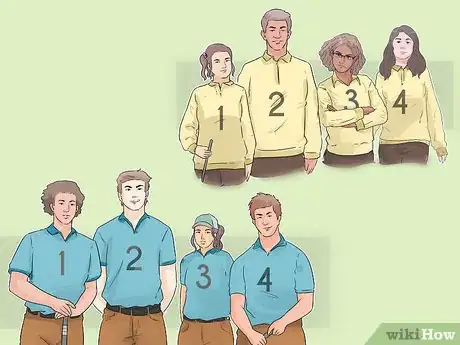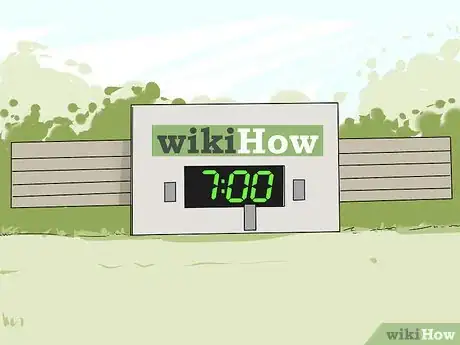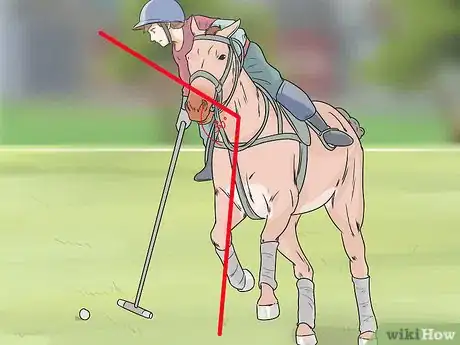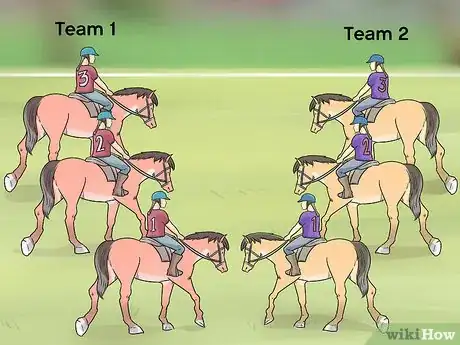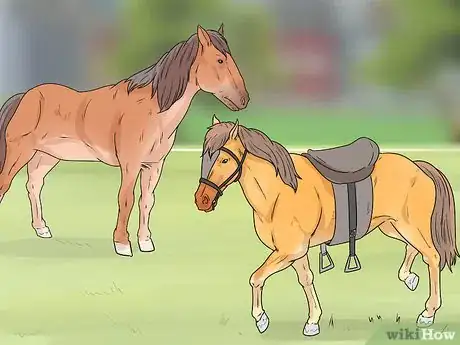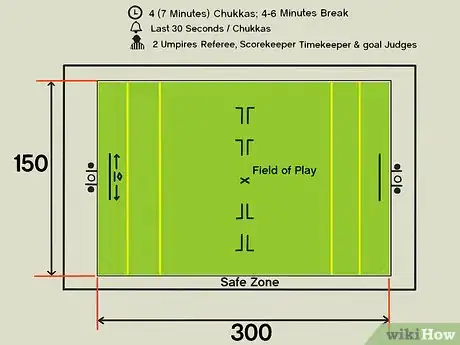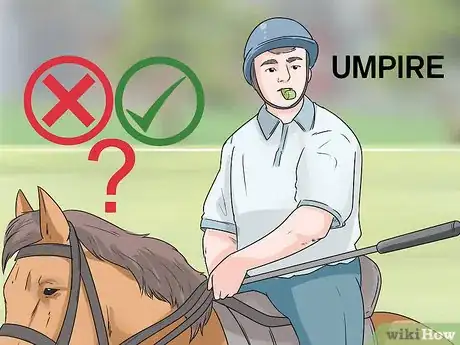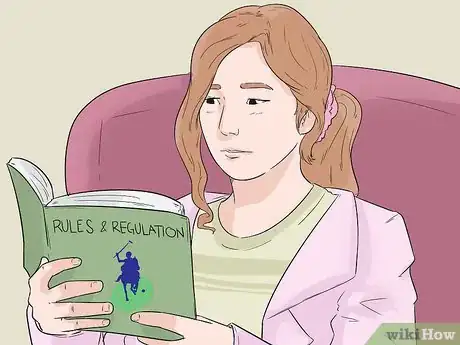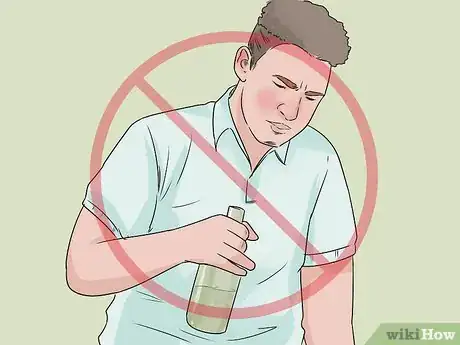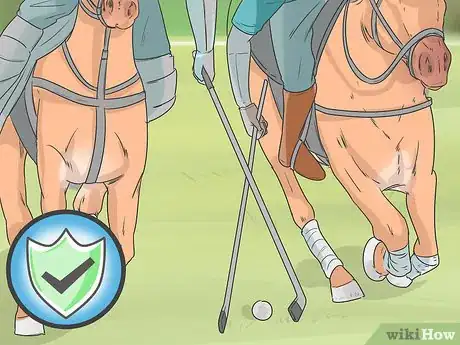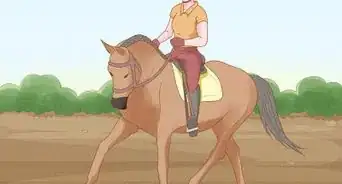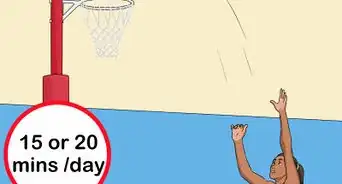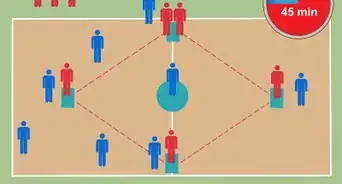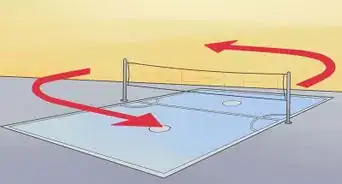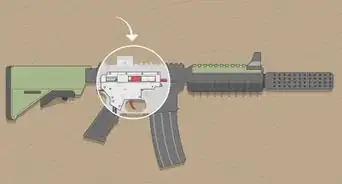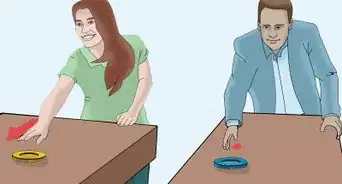wikiHow is a “wiki,” similar to Wikipedia, which means that many of our articles are co-written by multiple authors. To create this article, 19 people, some anonymous, worked to edit and improve it over time.
wikiHow marks an article as reader-approved once it receives enough positive feedback. In this case, 100% of readers who voted found the article helpful, earning it our reader-approved status.
This article has been viewed 24,121 times.
Learn more...
Polo is one of the oldest games in the world, actually dating back to times earlier than recorded history documents. It was first played by nomads in Central Asia, and eventually, the sport followed the nomads to Persia, which is known today as Iran, sometime between the years of 600 B.C. and 100 A.D.[1] Over time, the way in which the game is played has changed, but the basic concept of playing the sport on horseback has remained the same.
Steps
Playing Outdoor Polo
-
1Form two teams with four players on each team, who are all on horseback. The four players are split into “attack” and “defense” roles, based on their number, which is indicated on their jerseys.
- Player 1's primary focus is on scoring goals for the team, which is an offensive position. This player often has the lowest handicap, which refers to the player's skill level. Player 1 also has the responsibility of covering the opposing team's Player 4.[2]
- Player 2 is also focused on scoring, as an offensive position, but he/she takes on more responsibilities of playing defense than Player 1. Player 2 has to cover the opposing team's Player 3, as well.[3]
- Player 3 has a multitude of responsibilities, because he/she is typically both the best player on the team and the team captain. Roles include scoring, playing defense, determining strategy, and covering the opposing Player 2.
- Player 4's main responsibility is playing defense for the team, and he/she can move anywhere on the field.[4] He/She has to cover the opposing team's Player 1.
-
2Know each player's and the team's assigned handicaps. Polo competition committees exist in each country where the sport is played, and these committees determine both players' and teams' handicaps.
- Handicaps range from -2, which refers to beginners, to 10, which refers to highly advanced.
- Handicaps are referred to in goals, e.g. a team has a handicap of 20 goals.
- Polo competition committees use handicaps to assign teams to different levels of play, with low goal polo at a total handicap of -8 to 4, medium goal polo at 4 to 16, and high goal polo at 17 to 40. These levels are further divided to match teams of similar experience levels.
Advertisement -
3Arrange a horse to each player. Horses used for polo are referred to as “ponies,” although they are usually full-sized horses.
- Ponies are allowed to be in the size range of 14.2 hands to 16.0 hands, which is measured at the horse's withers. A hand is measured in four inches, so ponies can be 58 to 64 inches in height.
- Ponies should weigh between 900 and 1100 pounds.
- Polo ponies are chosen for stamina, agility, maneuverability, and bursts of speed.[5] They are often Thoroughbreds or Thoroughbred crosses.
- Polo rules dictate that ponies must be given breaks in the game, so each polo player must have at least 2-3 ponies for low goal polo up to one pony per chukka, or time period, for high goal polo.[6] Ponies can play for a maximum of two non-consecutive chukkas per polo match.
-
4Understand how the game is timed and controlled. Polo has several time periods, as well as mounted umpires and referees.
- A polo match has 7-minute time periods, which are called chukkas. The overall play time is about an hour-and-a-half to two hours, or 90-120 minutes.
- High goal matches have six chukkas.
- There are 3-minute breaks given between chukkas, and there is a 15-minute half-time, as well.
- Each game has two umpires and a referee, who intervenes when the umpires cannot come to an agreement. There is also a flagman at each goal post who signals when a goal has been scored.
- Outdoor polo is played on a field that is 300 yards long by 160 yards wide. Each end of the polo field as an 8-yard wide goal with 10-foot high posts.
-
5Learn how the game is played. Game play is fairly straightforward, as long as the techniques and rules are understood.
- Players use a long-handled mallet and play with a small, solid plastic ball.
- A polo match begins with a throw-in, which is when an official rolls the ball in between the teams, who are lined up in numerical order opposite of each other (i.e. Player 1 across from Player 4, Player 2 across from Player 3, and so on). Throw-ins also occur when play resumes after a time out.
- Right of way in polo refers to the line of the ball while it is in play (i.e. the direction in which the ball is rolling as part of play). The player who last struck the ball has the right of way. Opposing players are allowed to ride alongside the player with right of way, as long as they do not hinder his/her path.
- A goal is scored by driving the ball into the opposing team's goal with the mallet. Teams switch end goals after each goal is scored in order to account for wind advantage.
- Umpires can call fouls for dangerous riding or improper use of the mallet. Penalties can range from a free hit to a free goal for the opposing team.
- Overtime is called “sudden death” and occurs at the end of the last chukka if the two teams are tied. The first team to score wins.
-
6Familiarize yourself with defensive playing techniques. Defensive techniques help players keep the opposing team from scoring in their goal.
- Players can block an opponent's swing by hooking their mallets. Players can only do this when they are on the same side that the opponent is swinging or if they are directly in front of or behind the opponent.
- Ride-offs are allowed at 30-degree angles and at the horse's shoulder. A ride-off is used to break an opponent's concentration by riding alongside him/her, connecting with the opposing horse's shoulder, and leading the opponent away from the ball.
Playing Arena Polo
-
1Create two teams with three players on each team. Unlike outdoor polo, arena polo only requires three players, mostly to keep the safety of the horses and riders in mind.
- The players' jerseys should indicate their number as Player 1, 2, or 3.
- Having alternative players is allowed for each team, and the substitute players must be qualified to play.
- Players' handicaps usually rise by one for arena polo because it requires different skills. This means that if a player's outdoor polo handicap is 1 goal, then his/her arena polo handicap is 2 goals.
-
2Ensure that each player has at least two ponies for the match. Arena polo requires fewer ponies per player.
- Players can alternate two ponies for each chukka, giving one a break while the other is ridden for the current chukka.
- Ponies can be any breed or size for arena polo.
- Ponies must not be blind in either eye and must be able to be controlled for the entirety of the match, or they may be excluded.
-
3Understand how arena polo is timed and controlled. While these rules are similar to that of outdoor polo, there are some differences.
- Arena polo has four 7-minute chukkas, with 4-minute breaks after most chukkas. The end of the second chukka is followed by a 6-minute break.
- A bell or signal will sound 30 seconds prior to the end of each chukka.
- Game officials include two umpires, a referee, a timekeeper, a scorekeeper, and goal judges. However, it is the responsibility of the umpires to signal when a goal is scored.
- An arena should be 300 feet long by 150 feet wide, with goals at each end that are 10 feet wide by 12 feet tall.
-
4Learn the rules of playing arena polo, since there are some differences from outdoor polo. Most of the game is played the same, but since it is played in a smaller space, a few differences arise.
- A goal is scored when the ball hits the boards within the goal area and counts as one point. A small, air-filled ball with a circumference of 12.5” to 15” is used.
- The match begins with a throw-in, which is when an official rolls the ball in between the teams, who are lined up parallel to each other. The throw-in occurs after the umpire does a coin toss, with the captain of the winning team choosing which goal their team will defend first.
- A goal is scored by driving the ball into the opposing team's goal with the mallet. Teams switch end goals after each chukka.
- The player with right of way must follow the line of the ball (i.e. the direction in which it is rolling as part of play), and if the line of the ball changes, other players who may be in the way must be given time to clear the new right of way. Players are not allowed to obstruct the right of way unless they are far enough away from the player with the right of way to avoid collision.
- In the event of a tie, play will resume with the usual time periods after a 10-minute interval. The first team to score will win.
-
5Know what can cause fouls and penalties to be awarded. This system is also slightly different from outdoor polo.
- An umpire can call a foul on any violation of the rules of play. When a foul is called, the umpire must call a time out to announce the foul to the players.
- There are a variety of different penalties that can be awarded based on the foul committed. These include a free goal to the fouled team, free hits at varying distances from the goal, removal from part or the remainder of the game, disqualification, and forfeit.
- Players may not argue with the umpires when fouls are called, and vulgar language or disrespectful attitudes are not tolerated.
Maintaining Safety While Playing Polo
-
1Wear the appropriate gear for play. Polo requires a particular uniform, which helps to protect players. There are also safety requirements for the ponies.
- Helmets are a must for safety. They offer protection in various scenarios, including falling off the pony and getting hit with a mallet or ball.
- The outfit includes a long-sleeved jersey with riding pants and boots. In many cases, players are not allowed to wear sharp spurs or gear with protruding buckles or studs.
- Ponies must wear boots on all four hooves and bandages on all four legs for protection from the ball.
- Players are not allowed to use a bridle with blinkers on their ponies. Blinkers obstruct the view of the pony.
-
2Follow the rules of the game. The rules are meant to keep play safe for both players and ponies, and there are some key rules to highlight.
- Players may not touch another player or pony, including tack (e.g. saddle, blanket, et cetera), with his/her mallet.
- Polo must be played right-handed because left-handed players are thought to have less accuracy.
- It is important that polo ponies are well-trained and easily controlled. If a pony misbehaves and gets out of its rider's control, it is a danger not only to its rider but also to other players and officials.
- Swing the mallet at an appropriate distance from other players or officials. Swinging it in close range could cause a foul.
-
3Avoid participating in any recreational drug or alcohol use prior to play. For obvious reasons, this inhibits a player's judgment and puts himself/herself at risk, as well as the other players and officials.
-
4Stop or do not participate in play if a player is physically impaired. This includes a variety of issues, and it mainly refers to incidents that happened before or during play.
- Broken or fractured bones
- Dislocated joint sockets
- Concussions
- Illness, such as a virus, infection, or influenza
-
5Learn how to ride a horse prior to play. Many players learn how to ride while learning how to play polo, but it is best to have a basic understanding of how to ride.
- Take riding lessons with a polo club or at a stable that offers lessons.
- Understand how polo ponies are trained, which is to be reined with one hand and to be highly responsive to leg cues.[7]
- Become familiar with all ponies that you will ride during polo matches. Each pony has its own temperament.
-
6Ride your pony safely and carefully. Dangerous riding is worthy of a foul and could cause disqualification from the match, in addition to putting other players and officials at risk.
- Riding an opponent's pony into the side or end walls
- Riding the head of a pony into an opposing player
- Interfering in the right of way of another player with the potential to cause a collision
- Bumping off, or riding off, at an unsafe angle or speed
- Riding into the hindquarters of another pony
- Zigzagging in front of another player
Community Q&A
-
QuestionCan I play polo without horses?
 Community AnswerSure. Elephant polo, camel polo and donkey polo all exist. Alternately, you could try water polo.
Community AnswerSure. Elephant polo, camel polo and donkey polo all exist. Alternately, you could try water polo.
Warnings
- Polo can be very dangerous. Always be mindful of your own safety and the safety of those around you while playing.⧼thumbs_response⧽
- Pay attention to cues from your pony. Learn how to read the body language of your pony so that you can head off any misbehavior or accidents.⧼thumbs_response⧽
References
- ↑ http://www.polomuseum.com/sport-polo/history-polo
- ↑ http://www.polomuseum.com/sport-polo/polo-today
- ↑ http://www.polomuseum.com/sport-polo/polo-today
- ↑ http://www.polomuseum.com/sport-polo/polo-today
- ↑ http://www.polomuseum.com/sport-polo/polo-today
- ↑ http://www.polomuseum.com/sport-polo/polo-today
- ↑ http://www.polomuseum.com/sport-polo/polo-today
About This Article
To play outdoor polo, start by forming two teams with four players on each team, all of whom are on horseback. The game of polo lasts around 90-120 minutes and is divided into 7-minute periods called “chukkas.” To play the game, the players use long-handled mallets to roll a small plastic ball across the field. The objective of each team is to score a goal by driving the ball into the other team’s goal. For more tips on how to play polo, like how arena polo differs from outdoor polo and how to maintain safety while playing polo, keep reading!
